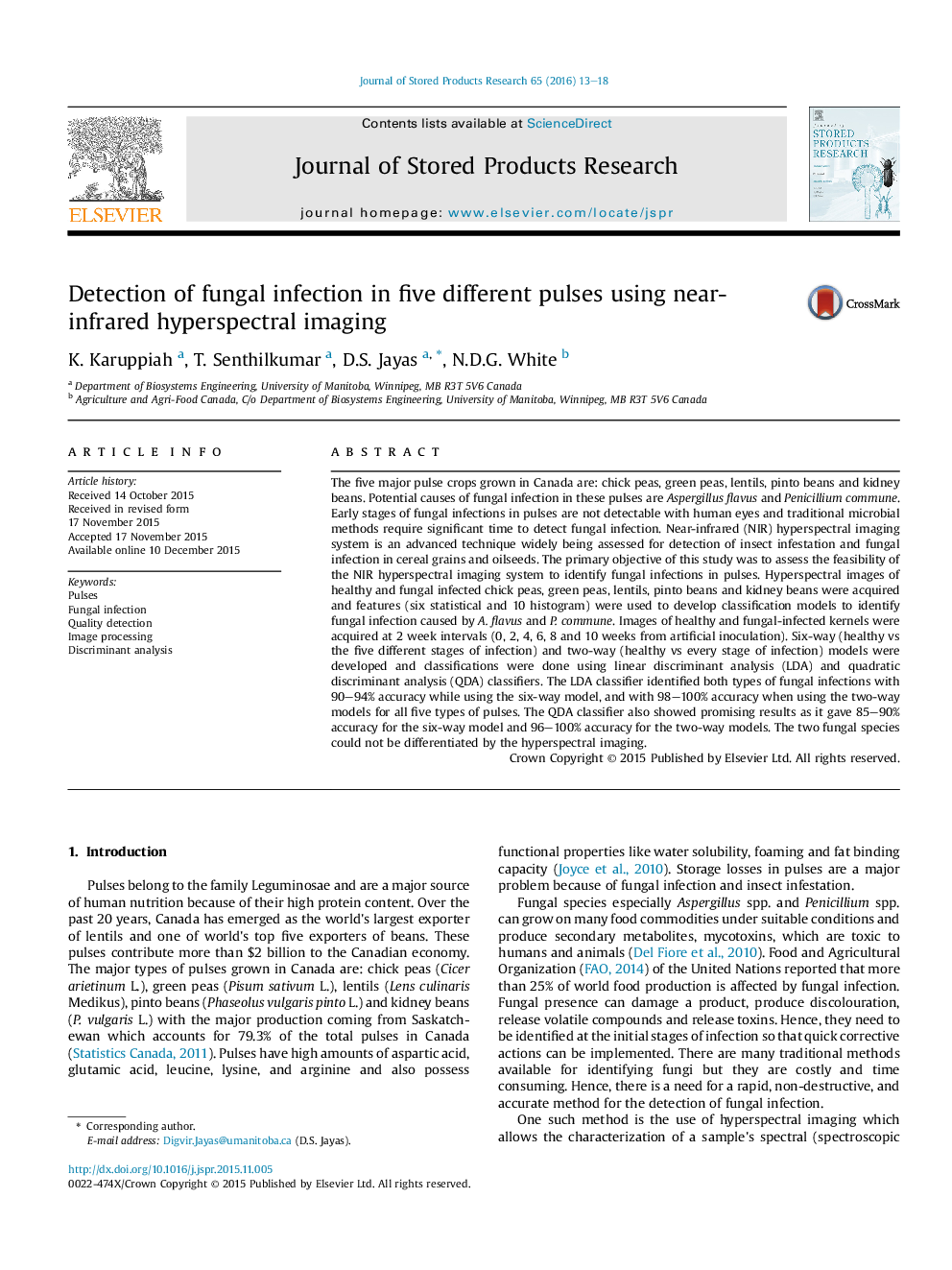| کد مقاله | کد نشریه | سال انتشار | مقاله انگلیسی | نسخه تمام متن |
|---|---|---|---|---|
| 4517015 | 1624924 | 2016 | 6 صفحه PDF | دانلود رایگان |
• Early detection of A. flavus and P. commune on pulses was possible after two weeks from inoculation.
• Both statistical and histogram features were used to classify healthy and infected pulses.
• Two-way classifiers differentiated healthy and fungal infected pulses with classification accuracy ranged from 90 to 100%.
• Two-way classification accuracies were higher than the six-way classification accuracies.
• Fungal species could not be identified using hyperspectral imaging.
The five major pulse crops grown in Canada are: chick peas, green peas, lentils, pinto beans and kidney beans. Potential causes of fungal infection in these pulses are Aspergillus flavus and Penicillium commune. Early stages of fungal infections in pulses are not detectable with human eyes and traditional microbial methods require significant time to detect fungal infection. Near-infrared (NIR) hyperspectral imaging system is an advanced technique widely being assessed for detection of insect infestation and fungal infection in cereal grains and oilseeds. The primary objective of this study was to assess the feasibility of the NIR hyperspectral imaging system to identify fungal infections in pulses. Hyperspectral images of healthy and fungal infected chick peas, green peas, lentils, pinto beans and kidney beans were acquired and features (six statistical and 10 histogram) were used to develop classification models to identify fungal infection caused by A. flavus and P. commune. Images of healthy and fungal-infected kernels were acquired at 2 week intervals (0, 2, 4, 6, 8 and 10 weeks from artificial inoculation). Six-way (healthy vs the five different stages of infection) and two-way (healthy vs every stage of infection) models were developed and classifications were done using linear discriminant analysis (LDA) and quadratic discriminant analysis (QDA) classifiers. The LDA classifier identified both types of fungal infections with 90–94% accuracy while using the six-way model, and with 98–100% accuracy when using the two-way models for all five types of pulses. The QDA classifier also showed promising results as it gave 85–90% accuracy for the six-way model and 96–100% accuracy for the two-way models. The two fungal species could not be differentiated by the hyperspectral imaging.
Journal: Journal of Stored Products Research - Volume 65, January 2016, Pages 13–18
